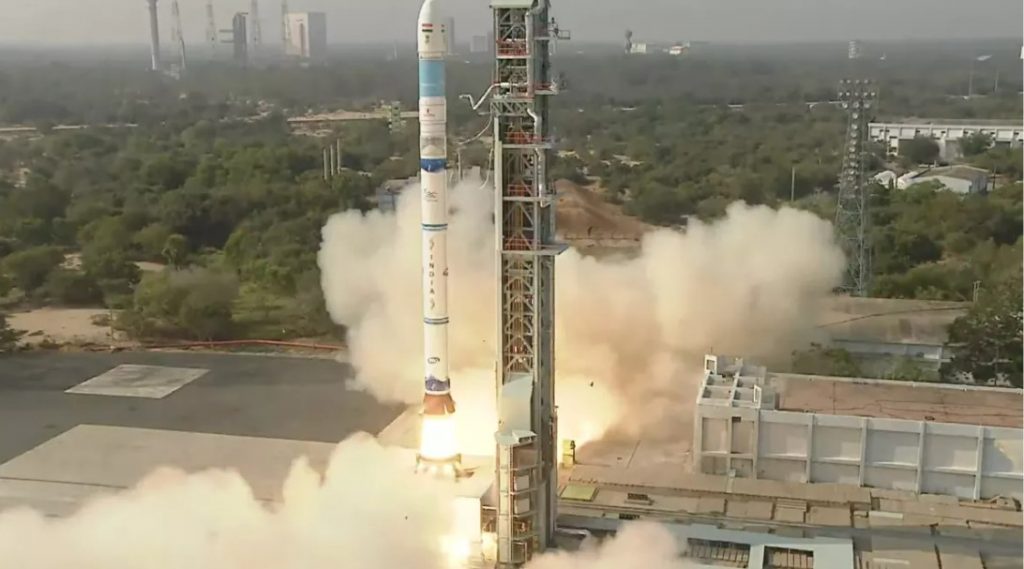India successfully launched its Small Satellite Launch Vehicle (SSLV) D2 from India’s Satish Dhawan Space Center in Sriharikota at 10:48 p.m. EST on February 10. The SSLV-D2 carried an Earth Observation satellite (EOS-07) and two other co-satellites called Janus1 and AzadiSat2 which were placed in a 450km circular orbit around our planet.

EOS-07 is a 156.3 kg satellite designed and developed by ISRO and Janus-1 is a 10.2 kg satellite made by the US company Antaris. AzaadiSAT-2 is an 8.7kg satellite made by 750 girl students under the guidance of Space Kidz India. The whole mission was successfully completed within 15 minutes of the flight. The success of the mission was important to ISRO as the vehicle had failed its maiden flight in August 2022.
During the August flight, SSLV ran into trouble during the second stage of separation. The rocket started vibrating intensely which then saturated all six accelerometers in the SSLV’s navigation system. This automatically pushed the rocket into salvage mode wherein it deployed the two payloads in the wrong orbit.
The SSLV was developed by ISRO (Indian Space and Research Organization) to launch satellites to low earth orbits on a Launch-on Demand basis. The vehicle has a max capacity of 500kgs and can carry multiple payloads.
After today’s successful launch, ISRO has gained firm ground in the commercial small and micro-satellite market. ISRO chief S. Somanathan said that the team is now preparing for the GSLV Mark III launch which will carry 236 OneWeb satellites and is also gearing up for the landing demonstration of their reusable launch vehicle.
- SpaceX Starship Launch Vehicle will conduct a Full Static Fire Test
- Garmin Fenix 7 Heading to Space Onboard the Polaris Dawn Space Mission
- Work begins on China’s First Commercial Spacecraft Launch Centre at Hainan
- Best Monitors For Work 2023
(via)







